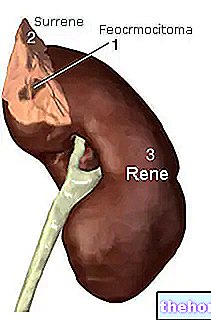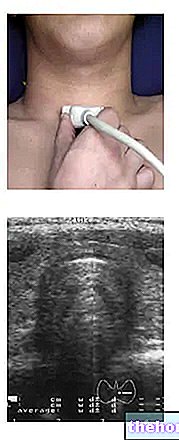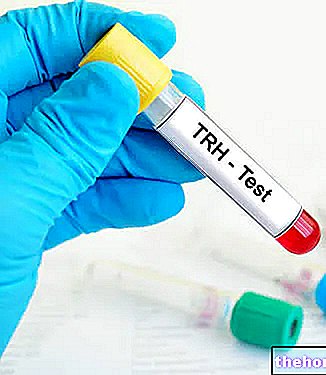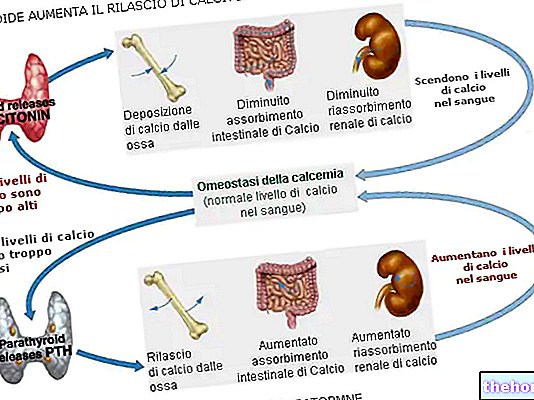Generality
Thyroiditis is a chronic inflammatory process affecting the thyroid gland; There are several forms, the most common of which, which we will deal with in this article, is Hashimoto's thyroiditis. In this disease, the butterfly-shaped gland located in the anterior region of the neck - which is precisely the thyroid - is damaged by abnormal antibodies. For this reason, the disease falls into the group of autoimmune thyroiditis.
In response to the attack of the immune system, the thyroid cells develop a chronic inflammatory process, which in many cases leads to a functional reduction of the gland. Not surprisingly, therefore, Hashimoto's thyroiditis is the most common cause of hypothyroidism.

Causes
The reasons why the body's immune system (which normally protects it and helps it fight infections) produces antibodies that attack the thyroid gland and make it unable to produce sufficient amounts of hormones have not yet been fully understood. have multifactorial origins and has been linked, for example, with hereditary and dietary factors (the sudden increase in iodine intake can aggravate the autoimmune process), with sex (it is more common in women than men, with a ratio 5-10: 1) and age (typical of second adulthood). Furthermore, Hashimoto's thyroiditis is often associated with other autoimmune diseases (celiac disease, type I diabetes, Addison's disease, vitiligo, rheumatoid arthritis, etc.). In the second decade of life it affects about one to two percent of the population, while between fifty and six years of age there are up to 3-4% of subjects.
The term "Hashimoto's" comes from the first Japanese physician, Dr. Hakaru Hashimoto, who in 1912 described the first case of thyroiditis with leukocyte infiltration, now also known as chronic autoimmune thyroiditis.
Symptoms and complications
For further information: Hashimoto's Disease Symptoms
Chronic lymphocytic (or Hashimoto's) thyroiditis can remain asymptomatic for a long time and usually has a subtle onset. The progression is slow, normally takes several years and in an advanced stage it causes irreversible damage to the gland. Thus there is a decrease in thyroid hormones in the bloodstream, accompanied by the onset of the classic symptoms of hypothyroidism.
The clinical manifestations of Hashimoto's thyroiditis vary considerably depending on the stage of the disease and the consequent severity of hypothyroidism. At first, the patient may notice symptoms such as weakness and easy fatigue, which may be mistaken as a sign of age. Later the symptoms of Hashimoto's thyroiditis become more disabling; for example, pale and cold skin, reduced tolerance to low temperatures, constipation, depression, hypercholesterolemia, weight gain mainly due to water retention ( the face, in particular, takes on a swollen appearance), hoarse voice, menorrhagia (in women), muscle-joint pain and stiffness.
The symptomatic variability of Hashimoto's thyroiditis complicates its clinical diagnosis, which is made through simple laboratory investigations on a blood sample.
In response to the decrease in blood levels of thyroid hormones, the pituitary (the small control unit that regulates the function of the endocrine system) tries to compensate for this deficit by stimulating the thyroid to accelerate its activity. To do this, the pituitary increases its secretion of TSH (thyroid stimulating hormone), which in the long run causes a compensatory enlargement of the gland. For this reason, Hashimoto's thyroiditis can be accompanied by goiter, a conspicuous swelling in the anterior region of the neck caused by an increase in the volume of the thyroid gland; in addition to the aesthetic and psychological repercussions, a large goiter can cause respiratory and swallowing problems. of its appearance, when the disease is still in an early stage, the patient suffering from thyroiditis can therefore perceive a sensation of tension in the anterior region of the neck.
Goiter is one of the late complications of Hashimoto's disease and like the other signs that we will see later, it can be effectively prevented by "adequate replacement therapy. Due to the increased levels of LDL cholesterol, a person affected by this disease, who does not has been adequately treated, presents a high cardiovascular risk, further increased by a possible cardiomegaly (pathological enlargement of the heart). In advanced Hashimoto's disease, severe depression is also common, with a significant decrease in libido and mental faculties.
Finally, severe hypothyroidism that is not adequately treated can lead to myxedema, in which the patient's face (half-open mouth, thick and wrinkled skin, scanty hair and eyebrows), his skin (yellowish, thick, pale, cold and dry) and nails (dry and brittle) take on a characteristic appearance.
During the evolution of thyroiditis there may also be transitory periods characterized by hyperthyroidism, that is, by an excess of thyroid hormones in the blood, due to the rupture of the follicles injured by the autoimmune process.
Thyroiditis - Causes, Symptoms, Treatment
Problems with playing the video? Reload the video from youtube.
- Go to the Video Page
- Go to Wellness Destination
- Watch the video on youtube
Diagnosis and treatment of thyroiditis "




























